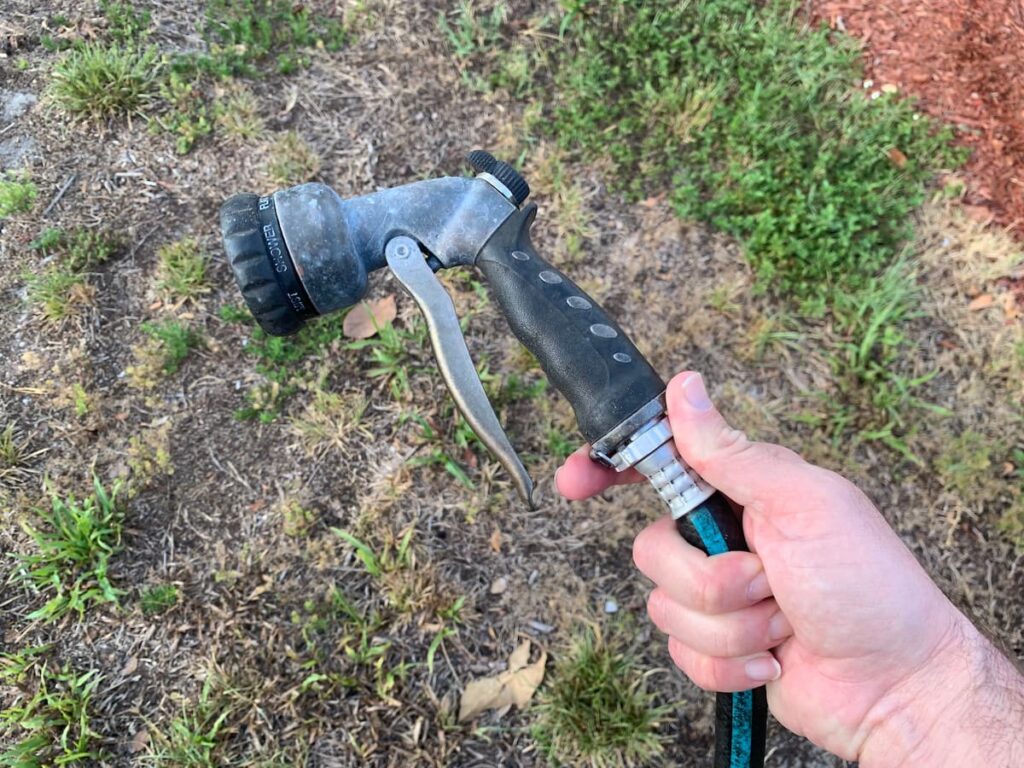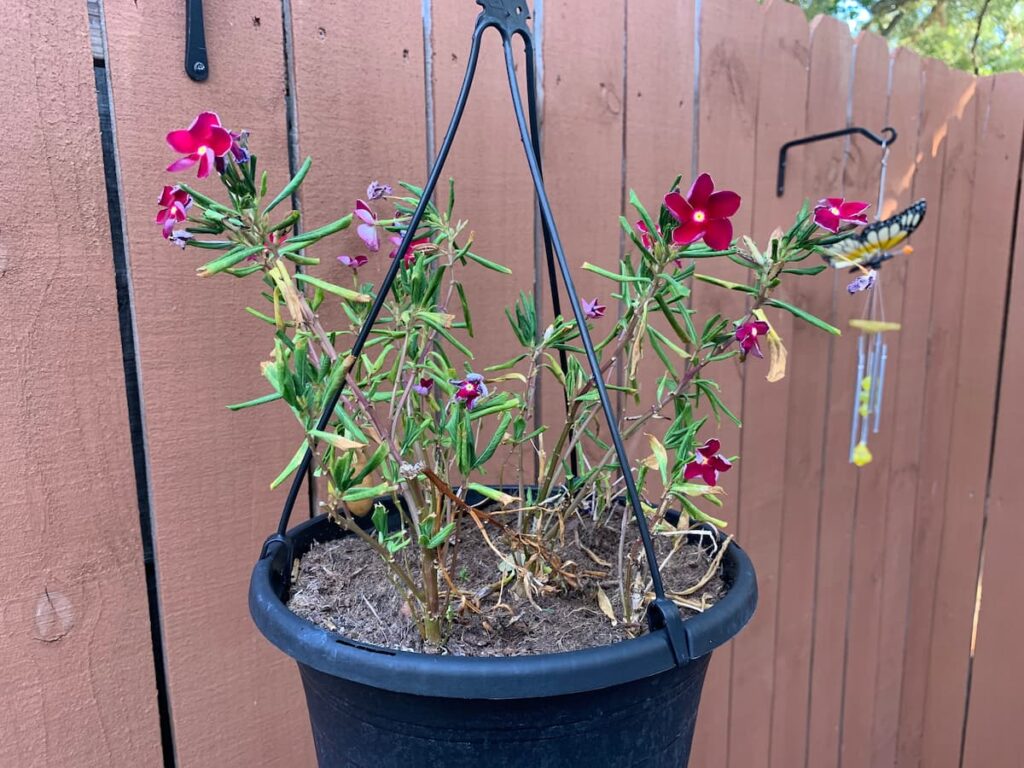Fighting against plant heat stress is one of my biggest challenges with my landscape and gardens. It’s a seemingly relentless issue in Central Florida. This is especially the case during the transition from late May into early June. That’s when a spell of extremely hot and dry weather leads into the peninsula’s rainy season. It’s also bad from about mid-September, when the rainy season wanes, until mid-October, when the region receives its first significant autumn cold fronts of the year.
I’ve lost more plants than I care to remember to heat stress. And it’s tougher to fight than you think. Heat stress can set in with plants very quickly. It can start off with dry soil, then the leaves wilt. You may see signs of sun scald. Then? The dreaded… It could lead to the death of your plant in only a couple of days.
Some people may read this and think, “oh, he just didn’t water his plants enough.” Or, “he bought the wrong plants for his yard.” But neither is the case. My yard contains only plants that are either native or endemic to my area. And all are planted in areas of sun, shade, or dappled sun / partial light as rated for these plants. The problem is multifaceted…
What do you do when the heat rises above 90 degrees on multiple days with no cloud cover and not a drop of rain? How about watering restrictions that don’t allow for sprinkler use – or even using a hose attached to a portable or oscillating sprinkler? What if you’re away for the weekend, can’t use the sprinklers, and don’t have anyone to water your plants for you?
Pruning My Losses
I’ve had days leading into or coming out of summer where I’ll be sick, and I’d be unable to water the plants. I’ll go outside a couple days later only to find them on death’s door. I couldn’t water them in time and water restrictions made it illegal to use sprinklers. And last summer was a most unusual one for my area of Central Florida; we received almost no rain at all, leading to a persistent drought that ushered in firm watering restrictions.
Some municipalities like mine allow for hand watering with hoses featuring a shut-off feature during droughts or watering restrictions. But watering even just the hedges and trees by hand can be laborious and take anywhere from 30 minutes to an hour or more for my suburban yard. Some communities prevent all forms of landscape watering or other forms of irrigation during severe droughts. This may even put watering by pitcher at risk — depending on the rules in your municipality.

These are exactly the types of things that can cause plants to suffer heat stress. In some cases, it’s too late. Even one or two missed days of watering can be enough to kill your plants.
I’ve unfortunately had to cut – or prune – my losses by simply getting rid of the heat-stricken plants and starting over. Of course, this costs hard-earned money to repurchase plants that could take years to grow as big or beautiful as the ones the heat killed.
Tips To Avoid Or Reduce Heat Stress
So, how do you help your plants avoid heat stress? What can you do if your landscape or garden is showing signs of plant heat stress?
Here are five tips I use to help prevent heat stress in my landscape and potted plants:
#1 – Water Plants Early In The Morning To Help Prevent Plant Heat Stress
If you are lawfully able to water your plants in your community, irrigate in the morning.
Why water your plants in the morning? For one, it’s usually cooler in the morning, so the water won’t evaporate from your plants as quickly. Watering in the heat of the afternoon can shock your plants. It could also lead to damage or death; water droplets can act like little magnifying glasses on a plant’s leaves, amplifying the light of the sun to the point it can burn the plant. Watering in the evening, when water is less apt to evaporate and can collect around the bases of plants, can lead to a variety of fungal issues and other diseases. So, be a morning lark and water your plants early if you can!
#2 – Move Potted Plants (Even Those Requiring Full Sun) Temporarily To The Shade
Even plants that love many hours of full sun are prone to heat stress if the conditions are right. (Or wrong.)
Potted plants have it especially tough during droughts because they’re more likely to dry out anyway. I minimize heat stress to potted plants – even those that grow in full sun – by moving them to shaded areas. You can move them back to their ordinary locations when the immediate threat of plant heat stress has subsided.

#3 – Check Soil Moisture
Can’t tell just by looking at your plants if they’re suffering heat stress or not? Check the soil moisture by sticking your finger into the soil.
Stick a finger an inch or two into the surrounding soil. If it feels dry or powdery, then your plant will need to be watered. If the soil is cool to the touch or sticks to your finger after you pull it out of the soil, it’s probably OK. Of course, this assumes we’re talking about plants that need continual moisture. Not all plants do, so please keep this in mind when referring to this tip.
#4 – Use Mulch
I’m a huge advocate of mulch, and I have been since I was a kid. Mulch helps tamp down weeds. It can also minimize heat stress on plants by retaining soil moisture down near a plant’s roots.
Now, too much of anything isn’t good, and that include mulch. One of the most common mulching mistakes is to over mulch. But 2 or 3 inches of clean, organic mulch around the hedges, in a garden bed, or covering the soil of a potted plant can go a long way toward reducing or even helping to prevent heat stress with your plants.
#5 – Mow Lawns As High As You Can To Reduce Grass Plant Heat Stress
Here’s a plant heat stress tip I learned from my mom many years ago. She said her dad – my grandfather – had her mow the yard as high as the mowing blade would allow. It helps the grass roots to grow deeper and become more resistant to heat stress and drought.
I’ll be darned, Grandpa was right! Bearing in mind, of course, that not all grass is supposed to grow very tall. For example, Bermudagrass and bent grass – commonly used for golf course putting greens – aren’t supposed to get very tall at all. But most residential lawn turfgrasses, like fescue, Bahia, or St. Augustine (the latter very popular in Florida, where I currently live) absolutely thrive when cut 3 or 4 inches tall. Whatever you do, don’t cut your grass too short. Not only could this hasten lawn heat stress, but it can scalp your grass and lead to having a dead yard.
Some More Advice For Reducing Plant Heat Stress
I always tell everyone I can to plant a landscape filled with native plants. As you’d imagine, native plants are suited by Mother Nature to thrive in your area. This won’t necessarily mean these plants will bode well against the relatively rapid transitions of climate change or a long spell of dry, hot weather. But native plants are less likely to suffer the kind of heat stress that plants not advised for your area might.
If hot, dry conditions prevail in your area throughout much of the year, you might also consider xeriscaping your yard. I remember xeriscaping, which can eliminate the need for irrigation, was becoming really popular in the 1980s and early ‘90s. Xeriscaping remains a landscape staple in the desert region of the Southwest United States and other parts of the country.
However, many homeowner associations don’t allow xeriscaping or native landscapes. Even those who don’t live in HOA communities may find xeriscaping or native landscaping (both of which minimize or eliminate grassy lawns) to be something of an acquired taste. After all, they pretty much look like the antithesis of the classic suburban yard that so many of us have ingrained in our minds. But xeriscaping and native landscapes are worth a look for those who want a solution to plant heat stress and other irrigation woes.
My parting thought here? Check with your local extension service. Your local landscape and gardening extension agents can help you source solutions that can aid you in planning a more drought-resistant landscape ideal for your neck of the woods.
